PORTWELL PCI-IDO-16
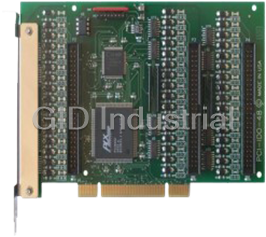
Description
16 individual, optically isolated differential outputs. These cards are ideal for use in control and instrumentation applications where high-voltage protection is required. Individual channel-to-channel isolation allows every channel to be physically and electrically separated from the others.
Part Number
PCI-IDO-16
Price
Request Quote
Manufacturer
PORTWELL
Lead Time
Request Quote
Category
PCI Digital I/O Products
Specifications
Categorization Information
PCI Digital IO Products
Features
- 16 individually optically isolated solid-state outputs
- Solid-state design permits high-speed switching and long-life expectancy
- Load voltages up to 60 Volts, current up to 2A
- Lower cost per point than externally-racked solid-state relay modules
- Optically isolated channel to channel and channel to ground
- Universal PCI, PCI-X, 3.3V and 5V compatible
Datasheet
Extracted Text
MODEL PCI-IDO-XX SERIES USER MANUAL FILE: MPCI-IDO-xx.A1k Notice The information in this document is provided for reference only. Portwell does not assume any liability arising out of the application or use of the information or products described herein. This document may contain or reference information and products protected by copyrights or patents and does not convey any license under the patent rights of Portwell, nor the rights of others. IBM PC, PC/XT, and PC/AT are registered trademarks of the International Business Machines Corporation. Printed in USA. Copyright 2001, 2007 by Portwell I/O Products Inc. All rights reserved. WARNING!! ALWAYS CONNECT AND DISCONNECT YOUR FIELD CABLING WITH THE COMPUTER POWER OFF. ALWAYS TURN COMPUTER POWER OFF BEFORE INSTALLING A CARD. CONNECTING AND DISCONNECTING CABLES, OR INSTALLING CARDS INTO A SYSTEM WITH THE COMPUTER OR FIELD POWER ON MAY CAUSE DAMAGE TO THE I/O CARD AND WILL VOID ALL WARRANTIES, IMPLIED OR EXPRESSED. Manual PCI-IDO-XX Series 2 Warranty Prior to shipment, Portwell equipment is thoroughly inspected and tested to applicable specifications. However, should equipment failure occur, Portwell assures its customers that prompt service and support will be available. All equipment originally manufactured by Portwell which is found to be defective will be repaired or replaced subject to the following considerations. Terms and Conditions If a unit is suspected of failure, contact Portwell' Customer Service department. Be prepared to give the unit model number, serial number, and a description of the failure symptom(s). We may suggest some simple tests to confirm the failure. We will assign a Return Material Authorization (RMA) number which must appear on the outer label of the return package. All units/components should be properly packed for handling and returned with freight prepaid to the Portwell designated Service Center, and will be returned to the customer's/user's site freight prepaid and invoiced. Coverage First Three Years: Returned unit/part will be repaired and/or replaced at Portwell option with no charge for labor or parts not excluded by warranty. Warranty commences with equipment shipment. Following Years: Throughout your equipment's lifetime, Portwell stands ready to provide on-site or in-plant service at reasonable rates similar to those of other manufacturers in the industry. Equipment Not Manufactured by Portwell Equipment provided but not manufactured by Portwell is warranted and will be repaired according to the terms and conditions of the respective equipment manufacturer's warranty. General Under this Warranty, liability of Portwell is limited to replacing, repairing or issuing credit (at Portwell discretion) for any products which are proved to be defective during the warranty period. In no case is Portwell liable for consequential or special damage arriving from use or misuse of our product. The customer is responsible for all charges caused by modifications or additions to Portwell equipment not approved in writing by Portwell or, if in Portwell opinion the equipment has been subjected to abnormal use. "Abnormal use" for purposes of this warranty is defined as any use to which the equipment is exposed other than that use specified or intended as evidenced by purchase or sales representation. Other than the above, no other warranty, expressed or implied, shall apply to any and all such equipment furnished or sold by Portwell. Manual PCI-IDO-XX Series 3 Table of Contents Chapter 1: Introduction...................................................................................................... 5 Figure 1-1: Single Output Channel Schematic Diagram ...........................................................................6 Figure 1-2: Block Diagram.........................................................................................................................7 Chapter 2: Installation........................................................................................................ 8 Chapter 3: Option Selection ............................................................................................ 10 Figure 3-1: Option Selection Map............................................................................................................10 Chapter 4: Address Selection ......................................................................................... 11 Chapter 5: Programming ................................................................................................. 12 Chapter 6: Connector Pin Assignments......................................................................... 13 Table 6-1: Connector Pin Assignments ...................................................................................................13 Manual PCI-IDO-XX Series 4 Chapter 1: Introduction Features • Individually-Isolated Digital Outputs for up to three 16-bit groups • Output readback • All solid-state design permits higher throughput than is possible with electromechanical relays • Load voltages up to 60 VDC • Outputs off at power turn-on and computer reset • Output connectors via on-card ribbon-cable headers • Lower cost per point than externally-racked solid-state relay modules Description This series of cards provide 16, 32, or 48 opto-isolated discrete outputs. Solid-state, P-Channel FET switches are used as the output elements and provide both greater reliability and much faster turn-on and turn-off time than is possible with electromechanical relays. User-supplied load voltages can be from 5V to 60VDC. Output connections are via 50-wire ribbon cables that mate with headers on the card. A strain relief bar where the cables exit the card assures that the cables will not interfere with adjacent cards. Standard cables are six feet long but alternate lengths are available. The card uses six bytes of I/O bus address, one byte for each of eight bits of output. The logic on the chip allows the application to read what was written to the latches. Diodes are included across the load for inductive-spike protection. There are 48-bit, 32-bit and 16-bit versions. The latter two models are depopulated versions of the 48-bit card. Outputs • Number of Channels: 16, 32, or 48 • Load Voltage Range: 5V to 60VDC (Voltage supplied by User) • Load Current per Channel: 1A max. steady state, 2A pulse (Note: Current may be limited by the cable. Certain ribbon cables limit current to 0.5A.) • Isolation: On-Card Channel-to-channel and channel-to-computer (* see note) • Switching Time: Turn-On 50μs Turn-Off 5μs, inductive-spike protection via a diode • Switch Resistance: 0.4Ω when saturated • Switch Leakage Current: 100 to 300μA • Power Required +5 VDC @ 245mA (48 bits) *Note on Isolation: Opto-Isolators and connectors are rated for at least 500V, but isolation voltage breakdowns will vary and are affected by factors like cabling, spacing of pins, spacing between traces on the PCB, humidity, dust and other environmental factors. This is a safety issue so a careful approach is required. For CE certification, isolation was specified at 60V DC. The design intention was to eliminate the influence of common mode. Use proper wiring techniques to minimize voltage between channels and to ground. Tolerance of higher isolation voltage can be obtained on request by applying a conformal coating to the board. Environmental • Operating Temperature Range: 0°C to +70°C • Storage Temperature Range: -40°C to +150°C • Humidity: 5% to 90% RH, non-condensing • Board Dimensions: 6.875" (174.6mm) long Manual PCI-IDO-XX Series 5 Figure 1-1: Single Output Channel Schematic Diagram Each bit of the card is optically-isolated from the output driver which switches the supply voltage to the output pin. The negative connection is made on the return pin and each output is isolated from every other output. When the opto-isolator is OFF the FET is activated by the Zener-diode-limited supply voltage. When the FET is activated, the full Supply voltage is available at the output pin. When the opto-isolator is ON, the FET deactivates and the output drops to the return line voltage level. Diodes are included across the load for inductive-spike protection. Safety Note These cards are used mostly as switches for externally supplied power up to 60VDC and up to one Amp. If the computer is turned OFF and that external power is still applied to the card, all the output lines will be turned ON. To avoid damage or injury, you MUST turn OFF the external power when the computer is turned OFF. Manual PCI-IDO-XX Series 6 Figure 1-2: Block Diagram Manual PCI-IDO-XX Series 7 Chapter 2: Installation A printed Quick-Start Guide (QSG) is packed with the card for your convenience. If you’ve already performed the steps from the QSG, you may find this chapter to be redundant and may skip forward to begin developing your application. The software provided with this card is on CD and must be installed onto your hard disk prior to use. To do this, perform the following steps as appropriate for your operating system. CD Software Installation The following instructions assume the CD-ROM drive is drive “D”. Please substitute the appropriate drive letter for your system as necessary. DOS 1. Place the CD into your CD-ROM drive. 2. Type B - to change the active drive to the CD-ROM drive. 3. Type GLQR?JJ- to run the install program. 4. Follow the on-screen prompts to install the software for this board. WINDOWS 1. Place the CD into your CD-ROM drive. 2. The system should automatically run the install program. If the install program does not run promptly, click START | RUN and type B GLQR?JJ, click OK or press -. 3. Follow the on-screen prompts to install the software for this board. LINUX 1. Please refer to linux.html on the CD-ROM for information on installing under linux. Manual PCI-IDO-XX Series 8 Caution! * ESD A single static discharge can damage your card and cause premature failure! Please follow all reasonable precautions to prevent a static discharge such as grounding yourself by touching any grounded surface prior to touching the card. Hardware Installation 1. Do not install card into the computer until the software has been fully installed. 2. Turn OFF computer power AND unplug AC power from the system. 3. Remove the computer cover. 4. Remove the two (2) nuts retaining the strain relief brackets from the card, set one bracket aside with the nuts. 5. Select an available location to install the card in an available 5V or 3.3V PCI expansion slot (you may need to remove a backplate first). DO not plug the card into the slot yet….. 6. With the card in your hand or on the bench, feed ribbon cable(s) through the selected computer backplate one at a time and plug onto the card header, starting closest to the mounting bracket. When all cables are installed, re-install the strain relief bracket and nuts, and tighten until snug. DO NOT OVERTIGHTEN! 7. Carefully plug the card into the slot and inspect for proper seating and fit. Make sure that the card mounting bracket is properly screwed into place and that there is a positive chassis ground. 8. Make connections from installed ribbon cables to the field equipment / wiring. 9. Check all connections and installations to ensure the system is ready to be turned on. Do not turn on field power before turning on the computer as all outputs on the card will be ON. 10. Replace the computer cover and turn ON the computer which should auto-detect the card (depending on the operating system) and automatically finish installing the drivers. 11. Run PCIfind.exe to complete installing the card into the registry (for Windows only) and to determine the assigned resources. 12. Run one of the provided sample programs that was copied to the newly created card directory (from the CD) to test and validate your installation. 13. Once the card has been initialized and you’re sure the outputs are in a known state, external / field power may now be turned on if desired. The base address assigned by BIOS or the operating system can change each time new hardware is installed into or removed from the computer. Please recheck PCIFind or Device Manager if the hardware configuration is changed. Software you write can automatically determine the base address of the card using a variety of methods depending on the operating system. In DOS, the PCI\SOURCE directory shows the BIOS calls used to determine the address and IRQ assigned to installed PCI devices. In Windows, the Windows sample programs demonstrate querying the registry entries (created by PCIFind and NTIOPCI.SYS during boot-up) to determine this same information. Manual PCI-IDO-XX Series 9 Chapter 3: Option Selection There are no user configurable options on this product. 6.90" Figure 3-1: Option Selection Map Manual PCI-IDO-XX Series 10 3.90" Chapter 4: Address Selection This card uses I/O addresses offset from the base address assigned by the PCI bus. The address spaces are defined in the Programming section of this manual. PCI architecture is Plug-and-Play. This means that the BIOS or Operating System determines the resources assigned to PCI cards rather than the user selecting these resources with switches or jumpers. As a result, you cannot set or change the card’s base address or IRQ level. You can only determine what the system has assigned. To determine the base address that has been assigned, run the PCIFind utility program. This utility will display a list of all the cards detected on the PCI bus, the addresses assigned to each function on each of the cards, and the respective IRQs. Alternatively, Windows systems can be queried to determine which resources were assigned. In these operating systems, you can use either PCIFind, or the Device Manager utility from the System Properties applet of the control panel. The card is installed in the Data Acquisition class of the Device Manager list. Selecting the card, clicking Properties, and then selecting the Resources Tab will display a list of the resources allocated to the card. The PCI bus supports 64K of I/O address space, so your card’s addresses may be located anywhere in the 0000h to FFFFh range. The card occupies eight consecutive 8 bit registers in the I/O address space. PCIFind uses the Vendor ID and Device ID to search for your card, then reads the base address and IRQ. If you want to determine the base address and IRQ without using PCIFind, use the following information: The Vendor ID code is 494F (ASCII for “I/O”) The Device ID code for the card is 0520 An example of how to locate PCI card resources is provided in the PCI/SOURCE directory, under your installation directory. This code runs in DOS, and uses the PCI defined interrupt BIOS calls to query the PCI bus for card-specific information. You will need the Device ID and Vendor ID listed above to use this code. Manual PCI-IDO-XX Series 11 Chapter 5: Programming The base address is assigned by the computer system during installation and will fall on an eight-byte boundary. The cards read and write functions are as follows: Address Write Read Base Address +0 Port 0 Bits 0-7 Port 0 Bits 0-7 Base Address +1 Port 0 Bits 8-15 Port 0 Bits 8-15 Base Address +2 Port 1 Bits 0-7 Port 1 Bits 0-7 Base Address +3 Unused Unused Base Address +4 Port 1 Bits 8-15 Port 1 Bits 8-15 Base Address +5 Port 2 Bits 0-7 Port 2 Bits 0-7 Base Address +6 Port 2 Bits 8-15 Port 2 Bits 8-15 Base Address +7 Unused Unused Writing a byte to Port n address activates each output with a “1” at the bit location, deactivates each output with a “0” at the bit. Reading a byte from Port n address displays a “1” for each output that is active, and displays a “0” for each output that is inactive. Bit 7/15 Bit 6/14 Bit 5/13 Bit 4/12 Bit 3/11 Bit 2/10 Bit 1/9 Bit 0/8 D7 D6 D5 D4 D3 D2 D1 D0 Manual PCI-IDO-XX Series 12 Chapter 6: Connector Pin Assignments Three identical 50-pin headers are provided on the product; one for each 16-bit output group. Port 0 is near the mounting bracket while Port 2 is at the far end of the card. Connector pin assignments are listed below. Pin Signal Pin Signal 1 Ground 2 Bit 0 Return 3 Bit 0 Out 4 Bit 0 Supply 5 Bit 1 Return 6 Bit 1 Out 7 Bit 1 Supply 8 Bit 2 Return 9 Bit 2 Out 10 Bit 2 Supply 11 Bit 3 Return 12 Bit 3 Out 13 Bit 3 Supply 14 Bit 4 Return 15 Bit 4 Out 16 Bit 4 Supply 17 Bit 5 Return 18 Bit 5 Out 19 Bit 5 Supply 20 Bit 6 Return 21 Bit 6 Out 22 Bit 6 Supply 23 Bit 7 Return 24 Bit 7 Out 25 Bit 7 Supply 26 Bit 8 Return 27 Bit 8 Out 28 Bit 8 Supply 29 Bit 9 Return 30 Bit 9 Out 31 Bit 9 Supply 32 Bit 10 Return 33 Bit 10 Out 34 Bit 10 Supply 35 Bit 11 Return 36 Bit 11 Out 37 Bit 11 Supply 38 Bit 12 Return 39 Bit 12 Out 40 Bit 12 Supply 41 Bit 13 Return 42 Bit 13 Out 43 Bit 13 Supply 44 Bit 14 Return 45 Bit 14 Out 46 Bit 14 Supply 47 Bit 15 Return 48 Bit 15 Out 49 Bit 15 Supply 50 Ground Table 6-1: Connector Pin Assignments Manual PCI-IDO-XX Series 13 Customer Comments If you experience any problems with this manual or just want to give us some feedback, please email us at: tech@portwell.com. Please detail any errors you find and include your mailing address so that we can send you any manual updates. Manual PCI-IDO-XX Series 14
Frequently asked questions
What makes Portwell Boards unique?

What kind of warranty will the PCI-IDO-16 have?

Which carriers does Portwell Boards work with?

Will Portwell Boards sell to me even though I live outside the USA?

I have a preferred payment method. Will Portwell Boards accept it?

Why buy from GID?

Quality
We are industry veterans who take pride in our work

Protection
Avoid the dangers of risky trading in the gray market

Access
Our network of suppliers is ready and at your disposal

Savings
Maintain legacy systems to prevent costly downtime

Speed
Time is of the essence, and we are respectful of yours
Related Products
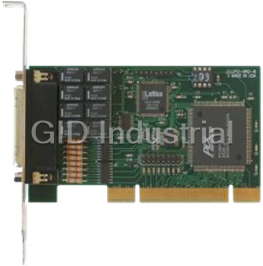
Half-size Low-Profile PCI bus compatible card that provides isolated digital input and output interf...
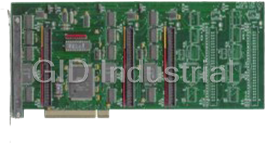
Parallel digital input/output cards designed for use in PCI-Bus computers. The same printed circuit ...
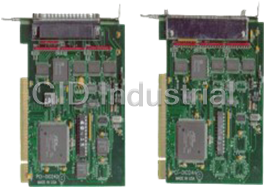
24-bit parallel, digital input/output cards designed for use in PCI-Bus computers. The difference be...

24-bit parallel, digital input/output cards designed for use in PCI-Bus computers. PCI-DIO24H are vi...
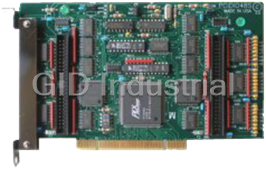
24-bit parallel digital input/output cards designed for use in PCI-Bus computers. The card is 6.9 in...



 Manufacturers
Manufacturers





What they say about us
FANTASTIC RESOURCE
One of our top priorities is maintaining our business with precision, and we are constantly looking for affiliates that can help us achieve our goal. With the aid of GID Industrial, our obsolete product management has never been more efficient. They have been a great resource to our company, and have quickly become a go-to supplier on our list!
Bucher Emhart Glass
EXCELLENT SERVICE
With our strict fundamentals and high expectations, we were surprised when we came across GID Industrial and their competitive pricing. When we approached them with our issue, they were incredibly confident in being able to provide us with a seamless solution at the best price for us. GID Industrial quickly understood our needs and provided us with excellent service, as well as fully tested product to ensure what we received would be the right fit for our company.
Fuji
HARD TO FIND A BETTER PROVIDER
Our company provides services to aid in the manufacture of technological products, such as semiconductors and flat panel displays, and often searching for distributors of obsolete product we require can waste time and money. Finding GID Industrial proved to be a great asset to our company, with cost effective solutions and superior knowledge on all of their materials, it’d be hard to find a better provider of obsolete or hard to find products.
Applied Materials
CONSISTENTLY DELIVERS QUALITY SOLUTIONS
Over the years, the equipment used in our company becomes discontinued, but they’re still of great use to us and our customers. Once these products are no longer available through the manufacturer, finding a reliable, quick supplier is a necessity, and luckily for us, GID Industrial has provided the most trustworthy, quality solutions to our obsolete component needs.
Nidec Vamco
TERRIFIC RESOURCE
This company has been a terrific help to us (I work for Trican Well Service) in sourcing the Micron Ram Memory we needed for our Siemens computers. Great service! And great pricing! I know when the product is shipping and when it will arrive, all the way through the ordering process.
Trican Well Service
GO TO SOURCE
When I can't find an obsolete part, I first call GID and they'll come up with my parts every time. Great customer service and follow up as well. Scott emails me from time to time to touch base and see if we're having trouble finding something.....which is often with our 25 yr old equipment.
ConAgra Foods